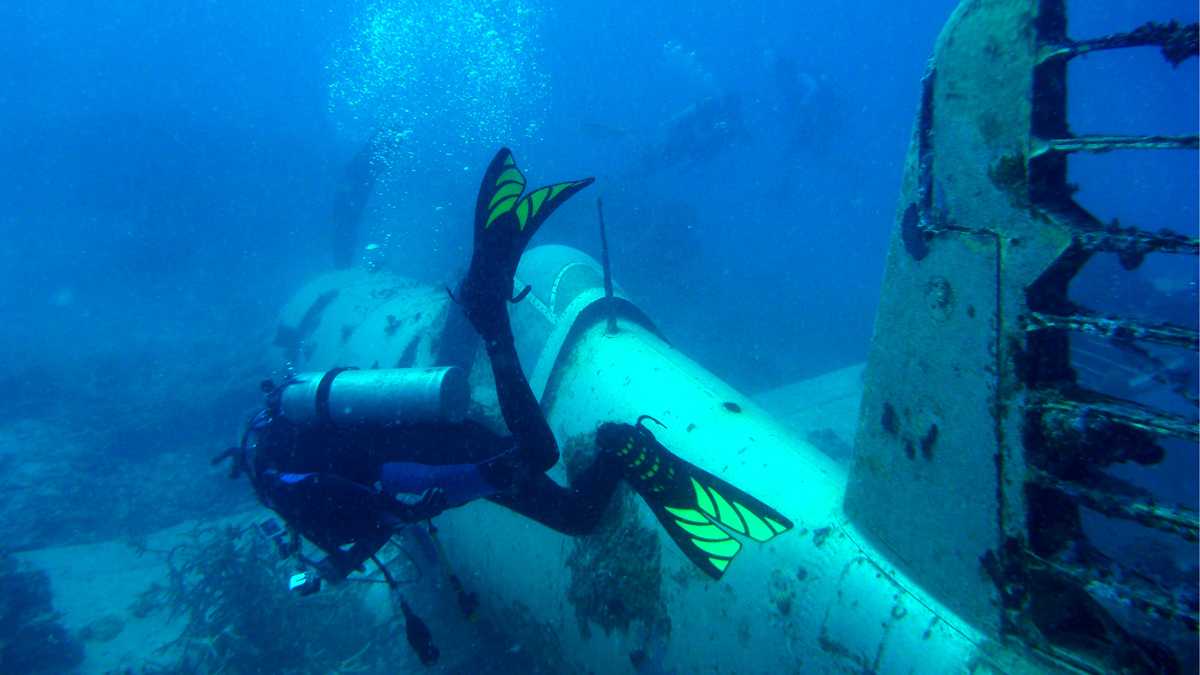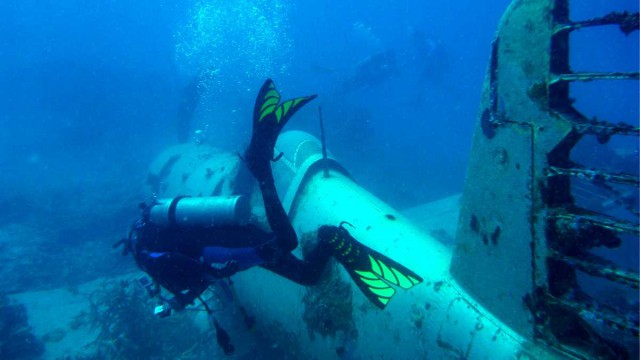The western Pacific islands of Palau were a popular battle ground throughout the Second World War. Both the allies and the Japanese sought after the location as a place to prepare for battles and refuel their tanks. As such, a lot of aircraft were lost in the waters of Palau, sunken for several years and making it difficult for the families of the fallen heroes to find closure to departure of their loved ones.
One crew member that was on the USS Princeton, an aircraft that attacked Palau in March 1944 was O. Karl Olander. He is the grandfather of Mark Moline, the director of the School of Marine Science and Policy within University of Delaware’s College of Earth, Ocean, and Environment.Until his mother showed him a scrapbook and journal made by his grandfather, Moline was unaware grandpa Olander was on the Princeton, even though he knew he was a Navy chaplain in the Pacific in the course of the Second World War.
In 2013, Moline and his department as well as his colleague at Scripps Institution of Oceanography collaborated with a non-profit organization known as BentProp to search for lost U.S airmen by using underwater robotics technologies to thoroughly scan the ocean bottom. Their searches are guided by the historical documentation they have gathered.
Speaking about how helpful the technologies from Scripps and University of Delaware were helpful to the search, BentProp founder, Patrick Scannon said it improved everything.
As at the beginning of this year, the partnership has enabled the team to discover two long-lost Second World War planes, the UDaily reports.
Moline and Eric Terrill, who is his colleague from Scripps- have been using advanced technology to research and prototype the intricate flow of water around the lagoons, coral reefs, as well as the islands of Palau since 2010. The project is funded by the U.S. Office of Naval Research (ONR). Every year, the researchers make field trips to study the impact large-scale eddies, currents as well as tides’ have on water movement. The hydrodynamic study also concentrates on the impact super-typhoons have on beaches and coral reef locations.
Over the last 20 years, BentProp has put a lot of work into conducting historical researches, documenting first-hand stories and organising annual land and water tours to hunt for aircrafts that disappeared during the Second World Warand enable them bring back US servicemen that went missing in action.
While he said he felt a connection to BentProp’s mission, going through his grandfather’s journal and handbook made it much stronger, Moline revealed.
Underwater robots(autonomous underwater vehicles or AUVs) are capable of surveying a large area of the sea floor to determine how deeps the water conditions are if programmed independently. They are also capable of monitoring and determining other oceanographic variables. A combination of cameras and sonar makes it possible for AUVs to take photos of sand ripples, coral reefs, as well as items like airplanes.
After narrowing down their search area in March 2014, the team’s autonomous underwater vehicles were able to discover the remains of the Avenger bomber, an aircraft that has been missing in action for 70 years. With the help of sonar images, an F6F Hellcat was discovered in another location a few days later.
In March 2015, the team will begin another search season, and Moline said he is ready. They have already prepared a high priority list, as well as a sequence of 12 precise searches to be conducted on aircrafts that went missing during the Second World War.

